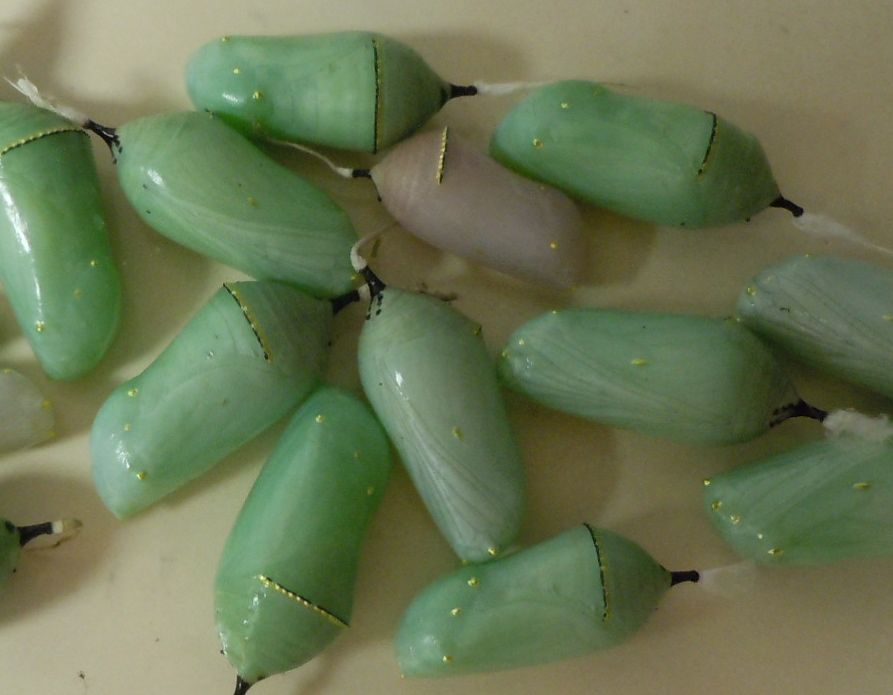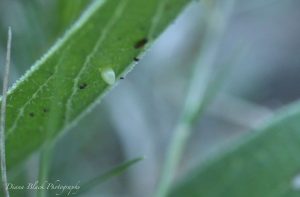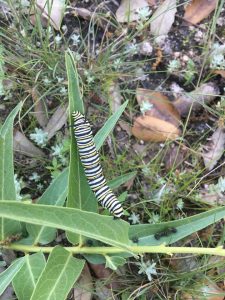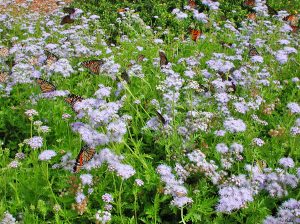
One of nature’s past success stories is the Monarch butterfly. You can see the joy of life they share with their sister butterflies, the Queens, in the beautiful chrysalises pictured above. Both butterflies disdain camouflage and develop in bright green cases with golden beading.
Monarchs summer in Canada, then fly 3000 miles to winter in Mexico. Amazingly these long-distance travelers only weigh about .02 ounces; they have no lungs and use little vents in their thorax and abdomen for oxygen.


They stop off along the way to rest and lay eggs on the poisonous plant, milkweed. The caterpillar eats the milkweed and becomes poisonous as do the chrysalis and the butterfly. They are protected from all predators. But not from us.Their population has dropped about 97% in a few decades. Monarchs, named by Linnaeus in 1758, may soon be extinct. Their forests in Mexico are being clear cut and herbicides have destroyed almost all of the milkweed in this country. Activists all over the country are are working to save the Monarchs and urge us to at least plant milkweed in our gardens. link It’s an easy plant to grow and the Monarch caterpillars are beautiful.
No one wants the Monarchs to disappear. They are the official butterfly of Texas, Alabama, Idaho, Illinois, Minnesota, and West Virginia. But we love our pesticides and herbicides more. I imagine we will kill them all before long so that we can continue to eat spotless food grown in weed-free ground and maintain perfect lawns.
Another easy plant to grow is the mistflower, Conoclinium greggii. Butterflies love it, especially Monarchs and Queens. Dozens of Queen butterflies cover my mistflowers most of the summer. All butterflies bring joy to the garden. I love the Painted Ladies, the Fritillaries, the Sulfurs, the Swallowtails. The list is too long for this post. But all are great at pollination, flying from flower to flower, full of grace, showing off their beauty. They are on the hunt for nectar; that the pollen clings to their body and legs is just one of the ways plants are served by everything around them.
